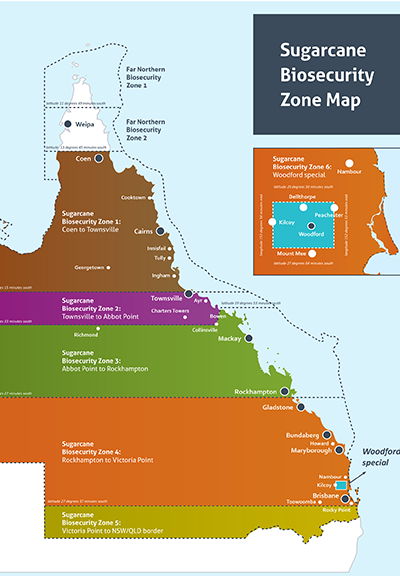Read the latest information on
Foot-and-mouth disease
Sugarcane | Sugarcane best management practice | Sugarcane biosecurity essentials | Sugarcane biosecurity zones | Sugarcane pests and weeds
 It is vital to the sugarcane industry to stop the spread of unwanted pests and diseases. As a result, there are six biosecurity zones in place in Queensland with restrictions that must be adhered to. Sugarcane machinery must be cleaned and inspected by an authorised inspector before it is allowed to move between Sugar Cane Biosecurity Zones.
It is vital to the sugarcane industry to stop the spread of unwanted pests and diseases. As a result, there are six biosecurity zones in place in Queensland with restrictions that must be adhered to. Sugarcane machinery must be cleaned and inspected by an authorised inspector before it is allowed to move between Sugar Cane Biosecurity Zones.
These biosecurity zones have been established to protect the industry from the spread of serious diseases like Fiji leaf gall.
Sugarcane planting material is not allowed to be moved between biosecurity zones without approval from an inspector.
Always comply with these biosecurity restrictions to prevent the spread of pests and weeds.
Sugar Cane Biosecurity Zones are: